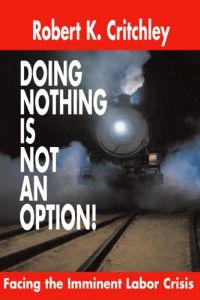Join getAbstract to access the summary!

Join getAbstract to access the summary!
Robert K. Critchley
Doing Nothing Is Not An Option
Facing the Imminent Labor Crisis
Thomson South-Western, 2004
What's inside?
Want to retire early? Forget about it. By 2010 there will be more jobs available than workers to fill them.
Recommendation
This is a timely book about a huge, unchangeable natural event: the demographic shift. Nothing can turn back the clock or change the direction of a demographic wave. Author Robert K. Critchley is well armed with age data to make a powerful case that there will be a worldwide labor shortage, but corporate CEO and human resources (HR) people are doing little to prepare for this massive change in labor management. To prepare for the inevitable labor force shift, companies should recruit and encourage older (50 plus) employees to remain on the job. Downsizing and outsourcing are shortsighted knee-jerk reactions to this looming problem and will not strengthen corporations for the inevitable. Companies that really believe that people are their best asset must develop effective human resources programs that actually do employees some good. This is crucial reading for HR executives and CEOs. It’s a reminder that time stops for no corporation, and that the people who work for you, even if they are getting a little gray, are going to be tough to replace - so you may want to keep them around.
Summary
About the Author
Consultant Robert K. Critchley served as president of DBM, Inc., an international outplacement and management company, and previously worked in banking in Australia and the U.K. His consulting company specializes in strategic planning and corporate restructuring. He holds various director positions for companies on the Australian Stock Exchange.


















Comment on this summary